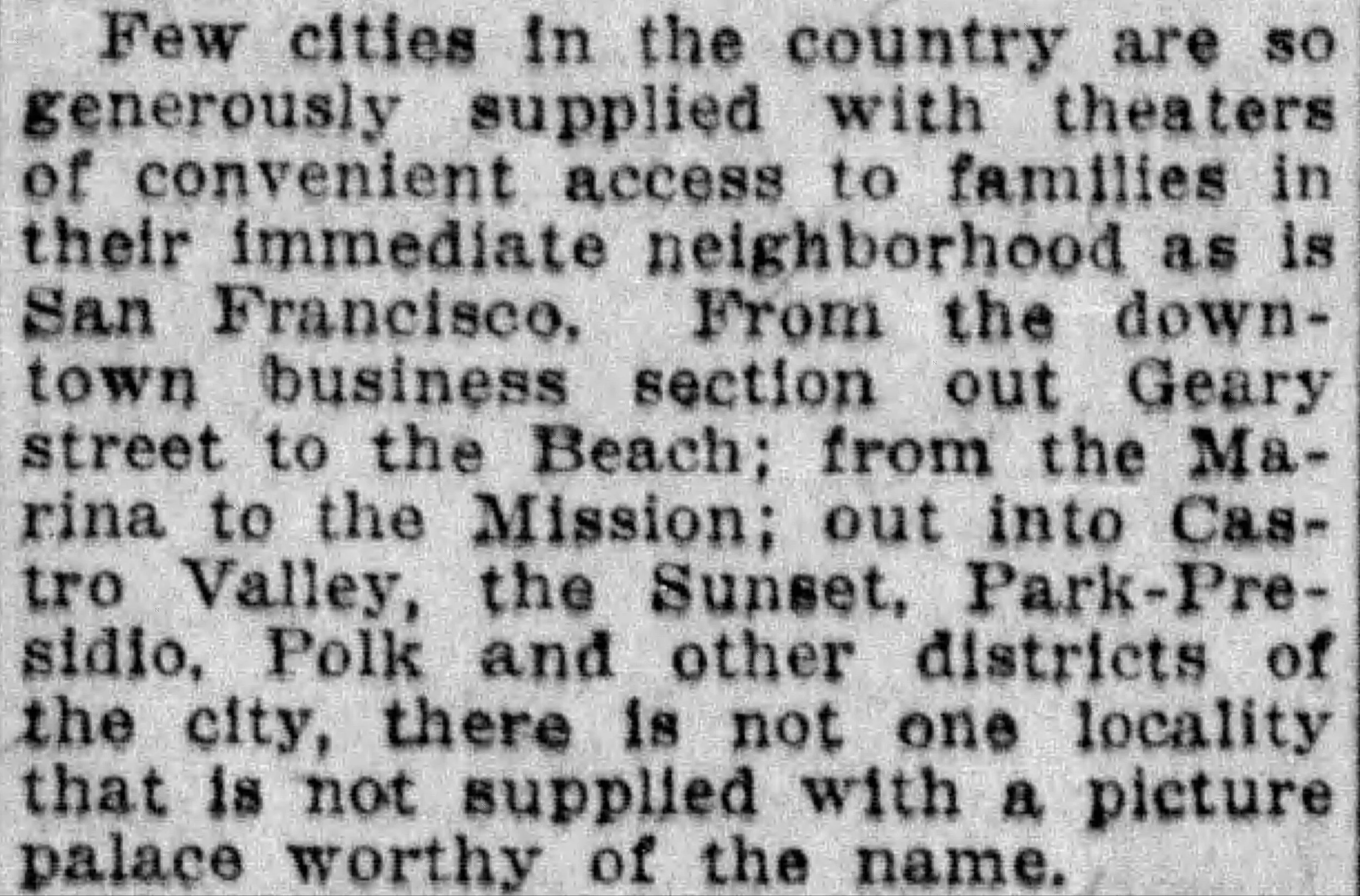“Residence Theaters Join Movie Week,” San Francisco Examiner - July 12, 1924
A Brief History of Neighborhood Theaters in San Francisco
Most of San Francisco's neighborhood movie theaters opened between 1910 and 1930 as new neighborhoods blossomed along streetcar lines that radiated out from the center of the city. Many of the oldest theaters were built in the inner neighborhoods and were small, gem-sized theatres like the like the Clay on Fillmore Street. Larger neighborhood theaters were developed in the late teens and twenties including theaters like the New Mission, Alexandria and Metro.
Most of San Francisco's neighborhood theaters were built by a small group of enterprising local theatre operators who each developed their own small circuits of neighborhood theaters. The most prominant San Francisco theater operators were Samuel H. Levin whose theaters included the Metro, Balboa and Harding Theatres, Abraham Nasser whose holdings included the Alhambra, Castro and Royal Theatres and Louis Greenfield who owned both the New Fillmore and New Mission Theatres. Other operators owned theatres throughout the City, but most of the City's neighborhood theaters were owned by one of a half dozen operators.
For most of the first half of the 20th century, San Francisco's neighborhood theaters were primarily second and third-run houses that featured films only after they had completed their runs at one of the large, studio-operated Market Street theaters. Large neighborhood theaters like the New Mission occassionally featured first-run films, but most neighborhood theaters screened second-run films exclusively until after anti-trust action wrestled the downtown theatres free from the control of the Hollywood studios and shook up the film-exhibition industry.
In the 1950s movie theaters accross the country struggled to compete with television and central city theatres struggled as populations shifted to outlying suburban areas. In San Francisco, the glory of many of the Market Street theaters began to fade and it would not be long before these theaters ceased to operate as film venues. Many neighborhood theaters held on, sometimes shifting to first-run programming or to screening foreign films. As the mult-plex craze began to hit the country, a number of neighborhood theaters were twinned or tri-plexed in an effort to keep them competetive with more modern, multi-screen suburban complexes with plenty of parking.
Fortunately, the population density of San Francisco provided many neighborhood theaters with large audiences long after similar theaters in other cities had closed their doors. The lack of avaiable land in the City also contributed to the ability of many neighborhood theaters to survive. There was simply no place to develop competing multi-screen theater complexes within the City. As a result, while the city has lost dozens of neighborhood theatres over the last 30 years, it has also managed to hold on to a small, but vital network of neighborhood theaters.
With just under a dozen theaters still operating, San Francisco is one of only a couple of American cities that retains a critical mass of neighborhood movie theaters. In other cities isolated landmark theaters remain, but the networks of neighborhood theaters have been abandoned - lost treasures of more neighborhood-focussed eras. Most of the theaters that remain continue to thrive as focal points of neighborhood commercial streets and offer a wonderful amenity to San Franciscans who can still walk to the movies.

